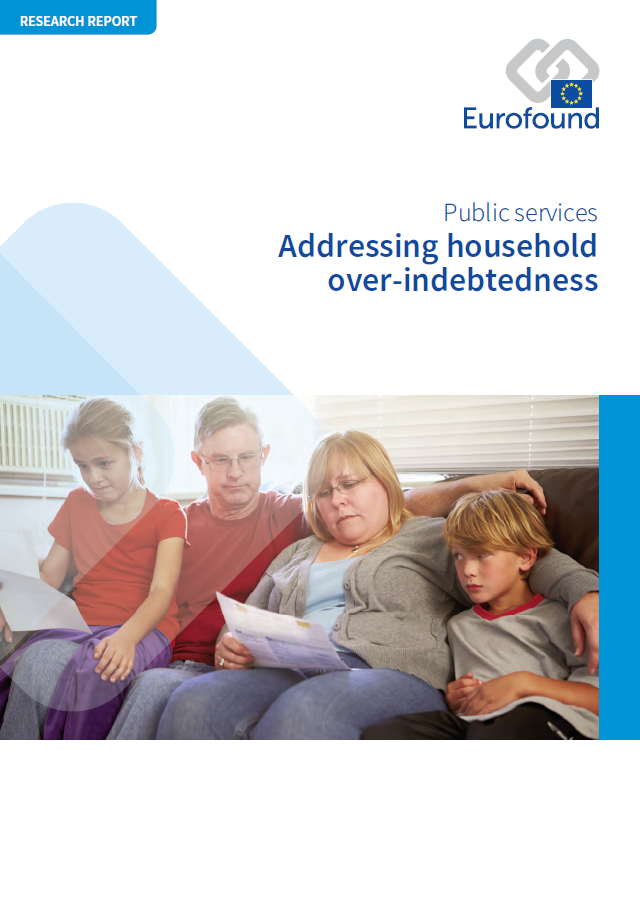
The issue of over-indebtedness continues to be a concern, particularly among some population groups and in Member States where recent increases can be observed. This report provides an overview of the main causes, triggers and consequences of household over-indebtedness, including the costs to society. It then examines two policy responses in the EU and Norway: debt advisory services and debt settlement procedures. While the findings show that in the wake of the global financial crisis, such services and procedures have generally become more widely available and accessible, gaps remain. The overall aim of the report is to draw the attention of national and EU-level policymakers to ways to improve policy responses to household over-indebtedness.
Key findings
In 2016, 14% of people (EU28) reported not being able to make scheduled payments related to rent or mortgages, consumer credit, loans from family or friends, or utility or telephone bills. If those with difficulty making ends meet – but without any arrears – are included, 21% risk being over-indebted.
Over-indebtedness is on the increase again in some countries and population groups.
People aged 25–49 years are most at risk. A smaller group of over-indebted people aged 65+ experience greater financial problems and lower mental well-being.
While policymakers often focus on mortgage or consumer debts with financial institutions, debt problems in low-income groups often relate to non-payment of utility or telephone bills, rent, taxes or fines, debts with friends, or healthcare costs. Policymakers interested in early intervention should not overlook this.
If over-indebtedness is not addressed in an appropriate and timely way, there are negative consequences for affected individuals and households, as well as for society as a whole. Issues arising from over-indebtedness can include mental and physical health problems, as well as unemployment and inactivity.
Tables
Table 1: Debt advisory services in the EU28 and Norway, 2019
Table 2: Illustrations of user numbers of debt advisory services, 2008–2018
Table 3: Debt settlement procedures for over-indebted people, EU28 and Norway, 2019
Table 4: Debt settlement procedure usage data, 2005–2018
Figures
Figure 1: Proportion of people aged 18+ at risk of over-indebtedness: arrears* or difficulties making ends meet, 2016, by Member State and EU28 (%)
Figure 2: Proportion of people with arrears, by income quartile and type of arrears, 2016, EU28 (%)
Figure 3: Proportion of people with arrears, by age group and type of arrears, 2016, EU28 (%)
Figure 4: People with arrears, reporting great difficulties making ends meet and the WHO-5, by age group, 2016
Figure 4a: Proportion of people with any arrears, reporting great difficulties making ends meet by age group, 2016, EU28 (%)
Figure 4b: WHO-5 score by age group of people with any arrears, 2016, EU28 (max. 100)
Figure 5: Proportion of households with arrears in mortgage or rent, utility bills and hire purchase instalments, 2010–2017, EU28 (%)
Figure 6: Availability of debt advice in the EU28, 2019
- Number of pages
-
68
- Reference nº
-
EF19044
- ISBN
-
978-92-897-2057-1
- Catalogue nº
-
TJ-01-20-099-EN-N
- DOI
-
10.2806/25005
- Permalink
Cite this publication
Eurofound (2020), Addressing household over-indebtedness, Publications Office of the European Union, Luxembourg.